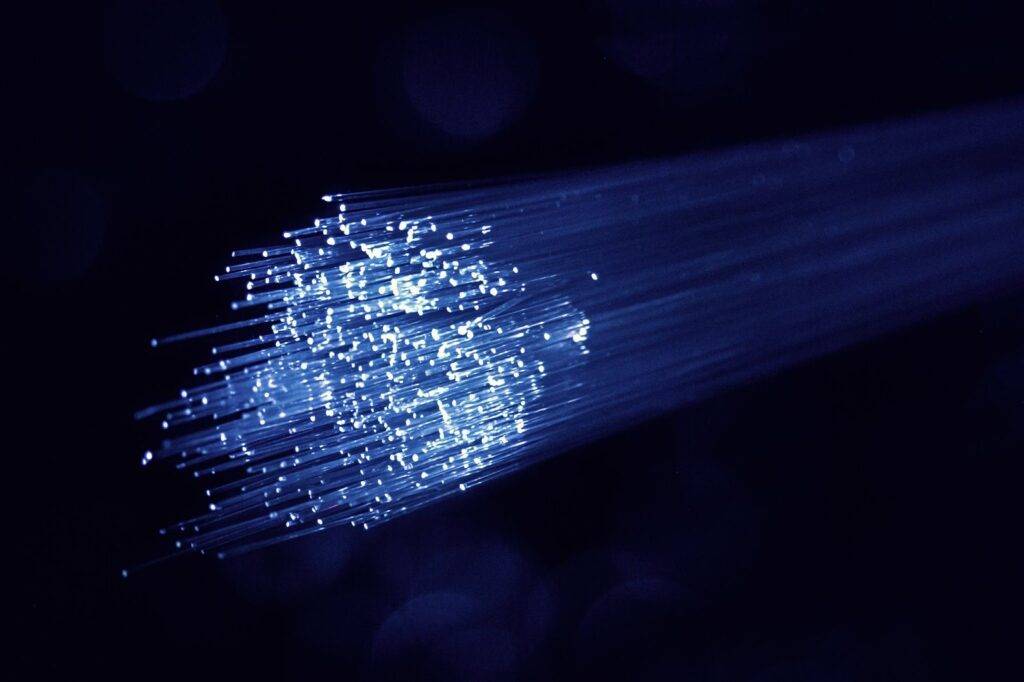Last Updated on July 9, 2024 by Team Experts
If you are trying to decide if fixed wireless internet is the right connection for your business, it may be helpful to know about fixed wireless VS fiber optic.
When choosing between these two internet access solutions, think about your needs first and foremost. Fiber optic provides high-speed connectivity because of its physical structure. However, this doesn’t mean that fiber optic is necessarily better than fixed wireless or vice versa. However before we proceed our discussion you can definitely have a read on Limpopo Cloud BSS transformation.
To learn more about how both options compare, take a look at the following ten key differences between fixed wireless VS fiber optic:
Fixed Wireless VS Fiber Optic Comparison
1.) Transmission distance / max speed :
With broadband over power lines (BPL), the maximum distance supported without signal degrading is 1200m . Fixed wireless transmission can reach around 12km on clear line of sight, with an average range of 5-10km. Fiber optic transmission can reach up to 40km .
2.) Ethernet cable :
A wireless network requires a minimum of two Ethernet cables per connection: one cable for Internet and another cable for each user. In contrast, fiber optic connections require only one Ethernet cable as the physical connectivity is already done at the central office. The same wire used for data transmissions can be divided into individual channels that provide telephony, video and data services over a single strand of optical fibers.
3.) Number of devices supported :
Fixed wireless is not usually able to support large numbers of clients per access point without degrading performance. As more clients are connected to a fixed wireless link, it becomes increasingly susceptible to network error, data loss and throughput degradation. Bandwidth on fixed wireless links is shared among devices connected to the same AP.

4.) Latency :
Latency of fixed wireless ranges from 20ms – 100ms, depending upon many factors including distance, power levels of the transmitter, line-of-sight availability between transmitter and receiver antennas etc. Fiber optic networks have near zero latency because there are no intermediate nodes through which packets travel. Despite having some latency, fiber optic cables offer very high data transmission speeds with no bottlenecks or network errors that can cause interference or packet loss like Fixed Wireless connections. Fixed Wireless connections often experience delays in video chat services resulting in voice lagging behind facial expressions on screen (due to compression of video and voice packets onto the same channel).
5.) Safety :
Fiber optic cables are not as prone to interference as wireless signals. There is no common cause of failure with fiber-optic transmissions, unlike with radio frequency (RF) transmission that may be affected by many different factors including line-of-sight availability, weather conditions, insufficient power etc. Fixed Wireless Risks: The FCC has proposed regulatory changes that will affect Fixed Wireless systems in 2020 . These new rules will apply to all devices operating in the millimeter wave spectrum between 57 GHz and 64 GHz, which account for almost all 5G equipment being developed today. As a result, Fixed Wireless Regulatory Changes will make it illegal to use POE outdoors in most areas of the US without a license.

6.) Wireless technologies :
Most fiber optic connections are over Singlemode, Multimode or Coax which are not capable of supporting FWA technology. This limits your business’s ability to reduce costs by deploying wireless backhaul to reach remote sites with sub-par existing network connectivity. With Fixed Wireless you can access any broadband service including Cable & FTTH .
7.) Cost :
Fiber optic networks are usually more expensive than Fixed Wireless systems, depending upon the type of architecture both employ. When choosing between these two options, remember that fiber optic networks have higher up-front installation expenses because of its physical infrastructure and may require ongoing maintenance costs for upgrades . On the other hand, Fixed Wireless systems have no hardware expenses after installation. Maintenance costs are low if the network is self-maintaining or can be easily modified through programming.
8.) Speeds :
Fixed Wireless connections have the potential to reach speeds of 1 Gbps , although products currently available on the market only support speeds up to 100 Mbps . Fiber optic cables provide transfer speeds of up to 10 Gbps depending upon its implementation. It is important to note that due to bandwidth limitations, it may not be possible for different users connected through a single radio channel (or multiple radio channels) to achieve maximum data rates simultaneously. So you will see reduced overall performance when there are more concurrent users demanding high throughput at specific times of day. However, because fiber optic cables allow for multiple parallel signal with low distortion and crosstalk, they can provide high data rates without any data distortion. Companies that have a need for higher bandwidths or more capacity on their fixed wireless connection should consider fiber optic networks.

9.) Future proofing :
Fiber optic technology is the most future-proof option available because it provides unmatched performance characteristics like no other technology . It has minimal opportunity to improve over time (only hardware changes). Fixed Wireless technologies are not as easily upgradeable but advancements in software could squeeze additional performance out of existing equipment by taking full advantage of all capabilities of newer devices. The biggest issue with Fixed Wireless is lack of compatibility with mmWave spectrum which will likely be used for 5G connectivity (although Fixed Wireless may be used to complement 5G services on short distances).
10.) Security :
It is important to ensure that all data on your network is secure, which can be difficult to achieve on a shared medium like wireless networks. With Fiber optic connectivity, the physical connection is usually very secure because of its access restrictions and there are no openings for multiple clients to connect through one point. However due to their high bandwidth capabilities Fixed Wireless systems may be vulnerable to interference by outside sources or unauthorized access.
There are many differences between fiber optics and fixed wireless technology, although some contain more advantages than others depending upon the needs of your business and how you use them . For example, if you need better speeds or higher capacity we recommend fiber over Fixed Wireless technologies every time . On the other hand, if you don’t have a need for high bandwidth or just want to save some money , Fixed Wireless might be the better option. In either case, it is important to think about how YOU can benefit from each technology and decide which one best fits your needs before making a decision.
If you have any questions regarding your internet options in general don’t hesitate to reach out !

